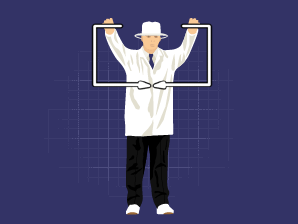On-Field Umpire:
Traditionally,cricket matches have two umpires on the field, one standing at the end where the bowler delivers the ball,and one directly opposite the facing batsman.However,in the modern game,they may be more than two umpires, third umpire who has access to video replays ,and a fourth umpire who looks after the match balls,takes out the drinks for the on field umpires,and also arranges travel and meals for all the umpires.In cricket,on field umpire is a person who has the authority to make judgement on the cricket field,according to the laws of cricket.Besides making decisions about legality of delivery,appeals for wickets and general conduct of the game in the legal manner, the umpire also keeps a record of the deliveries and announces the completion of an over.if the field umpire have any doubt he will refer to the third umpire.
In international cricket matches the third umpire is an off field umpire who makes the final decision in questions referred to him by the two on-field umpires.In the case of a run out or stumping,,a batsman may be declared "out" if the wickets put down.The wickets is down if a ball is removed from the top of the stumps or a wicket is struck out of the ground, whether by the ball, the bat or the striker's person.If the batsman is caught between the two popping creases and the wicket is put down, the batsman is declared out.In most cases,the event occurs in a fraction of a second.If the field umpires are unable to accurately come to a decision on the dismissal of a batsman,the umpire requests the third umpire to ascertain whether the batsman had made it home.The third umpire then looks at various TV replays from different angles and comes to a conclusion by pressing the appropriate signal.
Originally decisions were conveyed in traffic light style a red light indicating a batsman's dismissal, a green light not out, it is now common practice to display the decision via the large screen scoreboard,if available. If the umpire is unsure if a batsman is out or not, due to lack of conclusive evidence, the usual procedure is to acquit the batsman , known in cricketing parlance as "the benefit of the doubt".
http://Cricket Umpire.com/
Off-Field Umpire:
In international cricket matches the third umpire is an off field umpire who makes the final decision in questions referred to him by the two on-field umpires.In the case of a run out or stumping,,a batsman may be declared "out" if the wickets put down.The wickets is down if a ball is removed from the top of the stumps or a wicket is struck out of the ground, whether by the ball, the bat or the striker's person.If the batsman is caught between the two popping creases and the wicket is put down, the batsman is declared out.In most cases,the event occurs in a fraction of a second.If the field umpires are unable to accurately come to a decision on the dismissal of a batsman,the umpire requests the third umpire to ascertain whether the batsman had made it home.The third umpire then looks at various TV replays from different angles and comes to a conclusion by pressing the appropriate signal.
Signals:
Originally decisions were conveyed in traffic light style a red light indicating a batsman's dismissal, a green light not out, it is now common practice to display the decision via the large screen scoreboard,if available. If the umpire is unsure if a batsman is out or not, due to lack of conclusive evidence, the usual procedure is to acquit the batsman , known in cricketing parlance as "the benefit of the doubt".



No comments:
Post a Comment